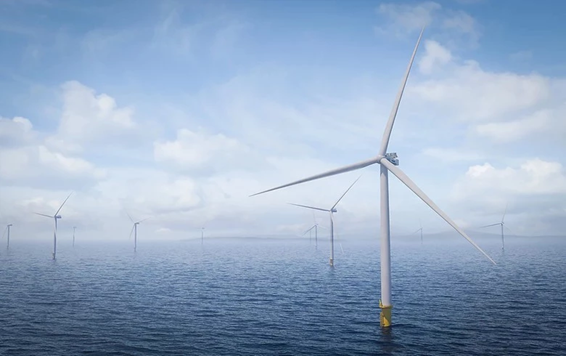Danish turbine manufacturer Vestas is a global leader in the wind industry; its installed fleet of wind solutions avoids an estimated >200 million metric tonnes of CO2e annually.[1] Yet even this renewable power enabler faces difficult decarbonization challenges in its own supply chain, particularly steel sourcing.
Steel production is one of the most energy- and carbon-intensive manufacturing processes on the planet, and accounts for about 7% of global carbon emissions.[2] Vestas recognizes this and has partnered with steel manufacturer ArcelorMittal to significantly decrease the embodied carbon emissions in its wind turbine towers.
By using upcycled scrap metal and electric arc furnaces powered by 100% wind energy (instead of blast furnaces), greenhouse gas emissions during steel production are notably reduced. The resulting low-emission material can then be used in Vestas onshore turbine towers and select parts of its offshore turbines. Compared to conventional steelmaking, these low-emissions changes to the steel production supply chain can achieve a 66% decrease in emission intensity per kilogram of steel produced.[3]

Source: Vestas Low-Emission Steel One-Pager
According to Vestas, “By utilizing low-emission steel in the top two sections of an offshore tower, this emission reduction would translate to approximately 25% reduction of emission compared to a tower made from steel made via conventional steelmaking route. For an entire onshore tower, the CO2 reduction is at least 52%,”[4] all the while delivering the same trusted quality, design, and installation process.[5]
Through innovations like low-emission steel, Vestas continues to execute on their sustainability strategy. The first offshore wind farm project utilizing Vestas and ArcelorMittal’s low-emission steel will be the Baltic Power Offshore Wind Project off the coast of Poland. With construction expected to begin in 2025, the 1.2GW offshore wind farm is estimated to supply clean electricity to more than 1.5 million homes in Poland.[6] While this is just the beginning for low-emission steel and decarbonizing wind turbines, Vestas is helping to lead the transition toward a world powered by sustainable energy.
If you are interested in reading more about corporate work to lower negative environmental impacts, please see other EP Insights from Terra Alpha here.
________________________
[1] Vestas 2023 Sustainability Report, Page 57
[2] https://www.bloomberg.com/news/articles/2023-06-20/why-steel-s-carbon-emissions-are-so-high-and-what-s-needed-to-lower-them
[3] https://www.vestas.com/en/media/company-news/2024/vestas-introduces-low-emission-steel-offering-for-wind–c3909530
[4] https://www.vestas.com/en/media/company-news/2024/vestas-introduces-low-emission-steel-offering-for-wind–c3909530
[5] https://www.vestas.com/en/sustainability/sustainability-product-offerings/low-emission-steel
[6] https://balticpower.pl/en/
Photo: Vestas Wind Systems

